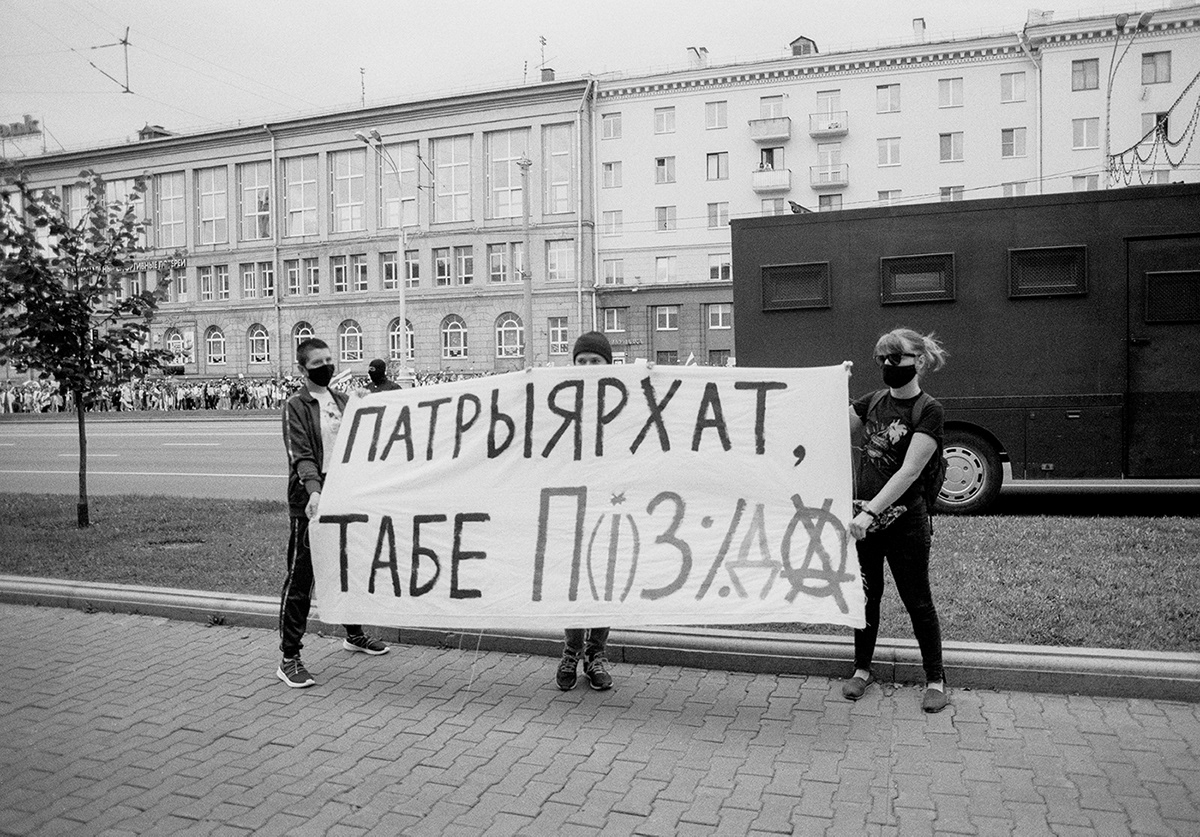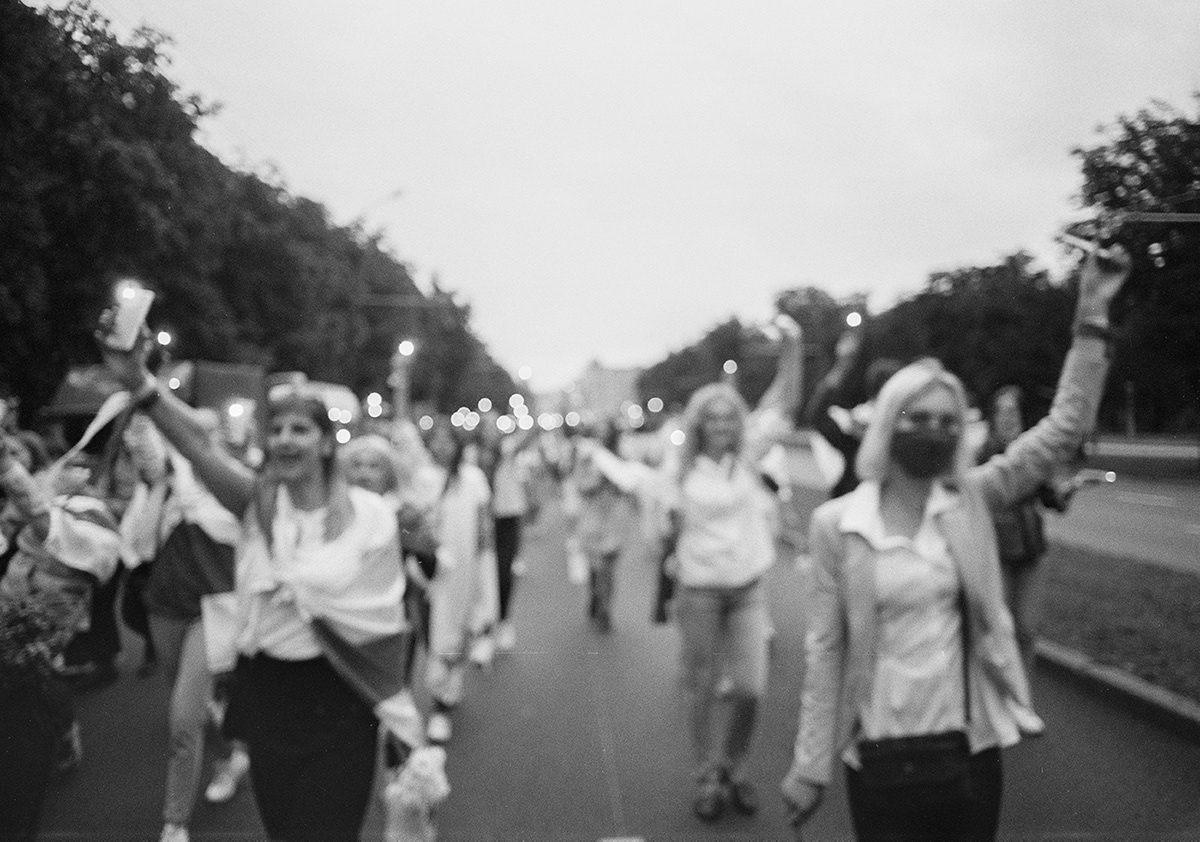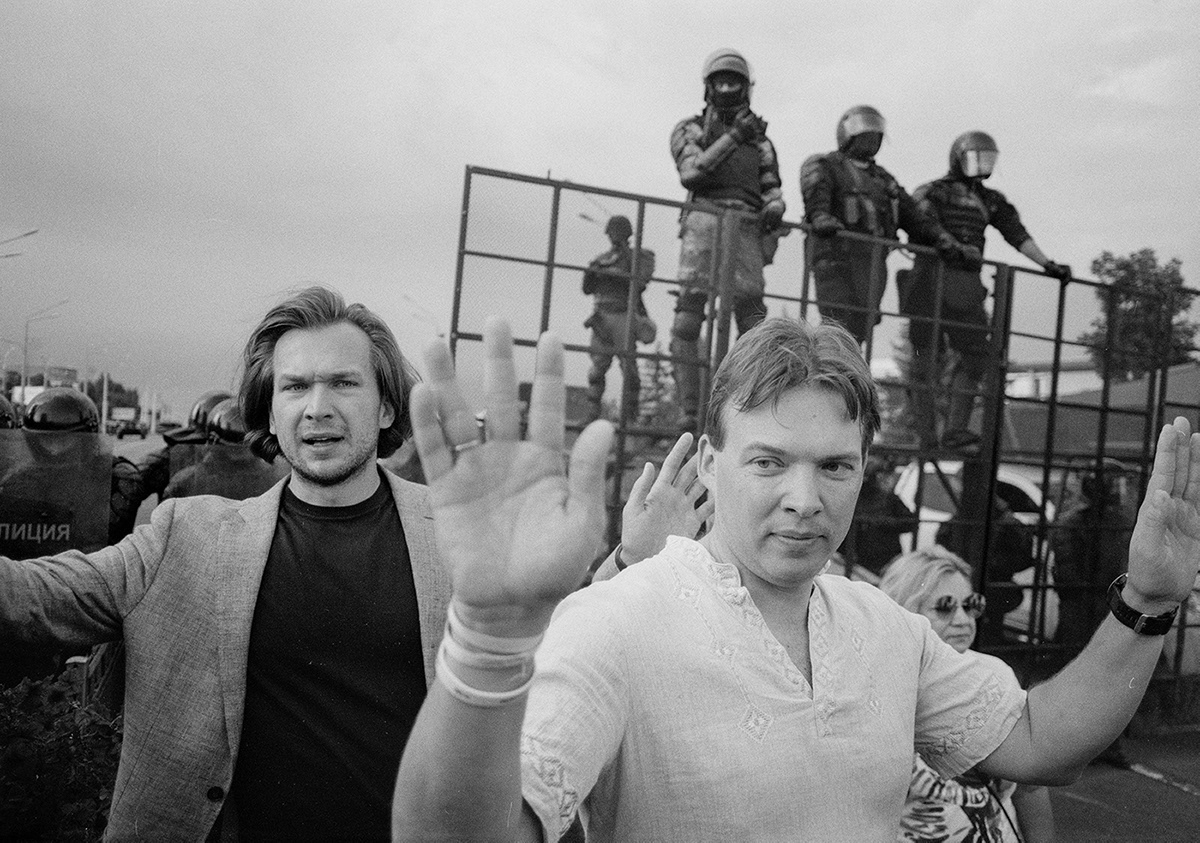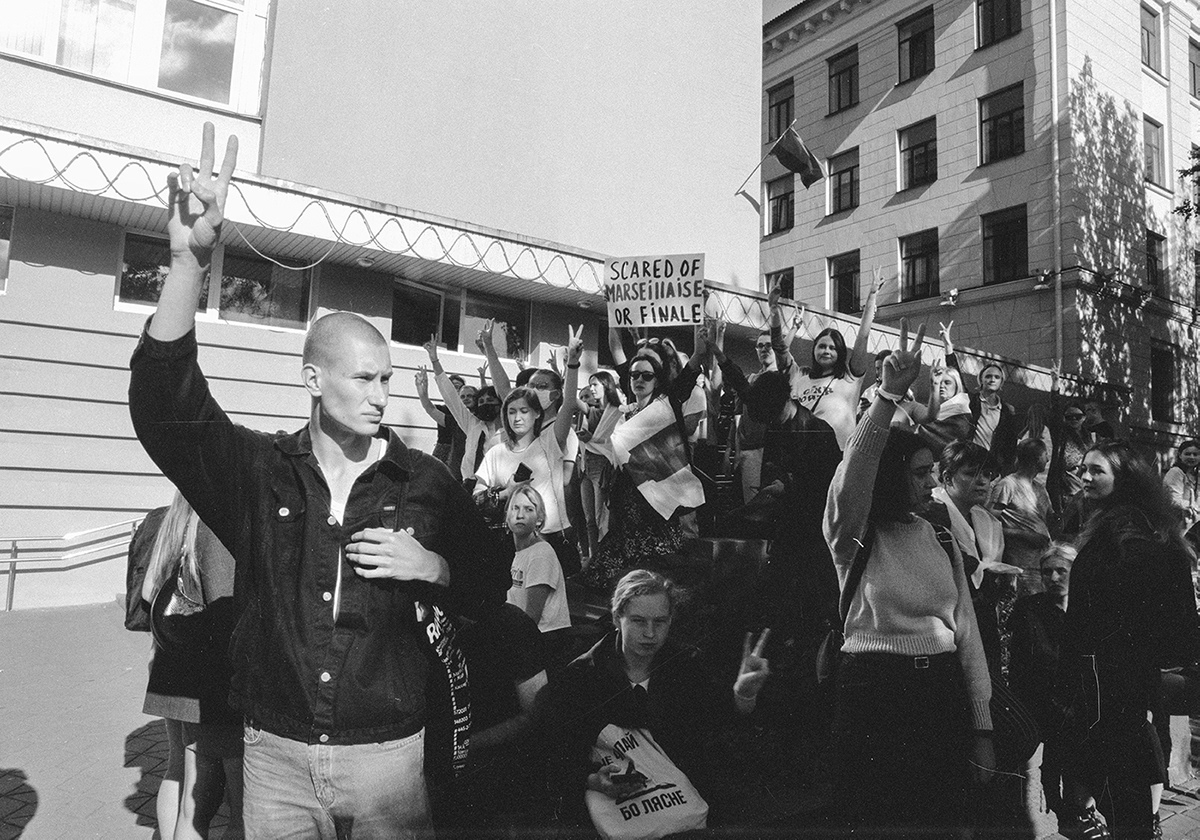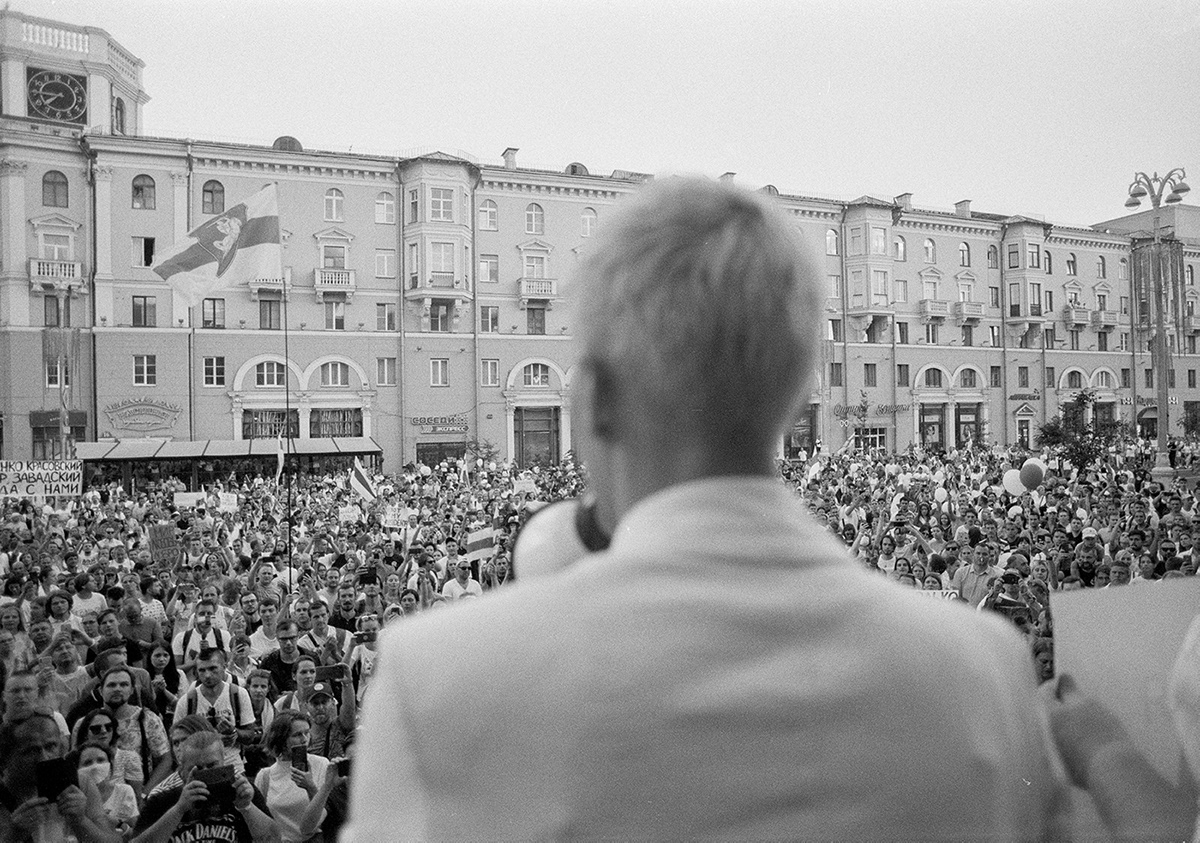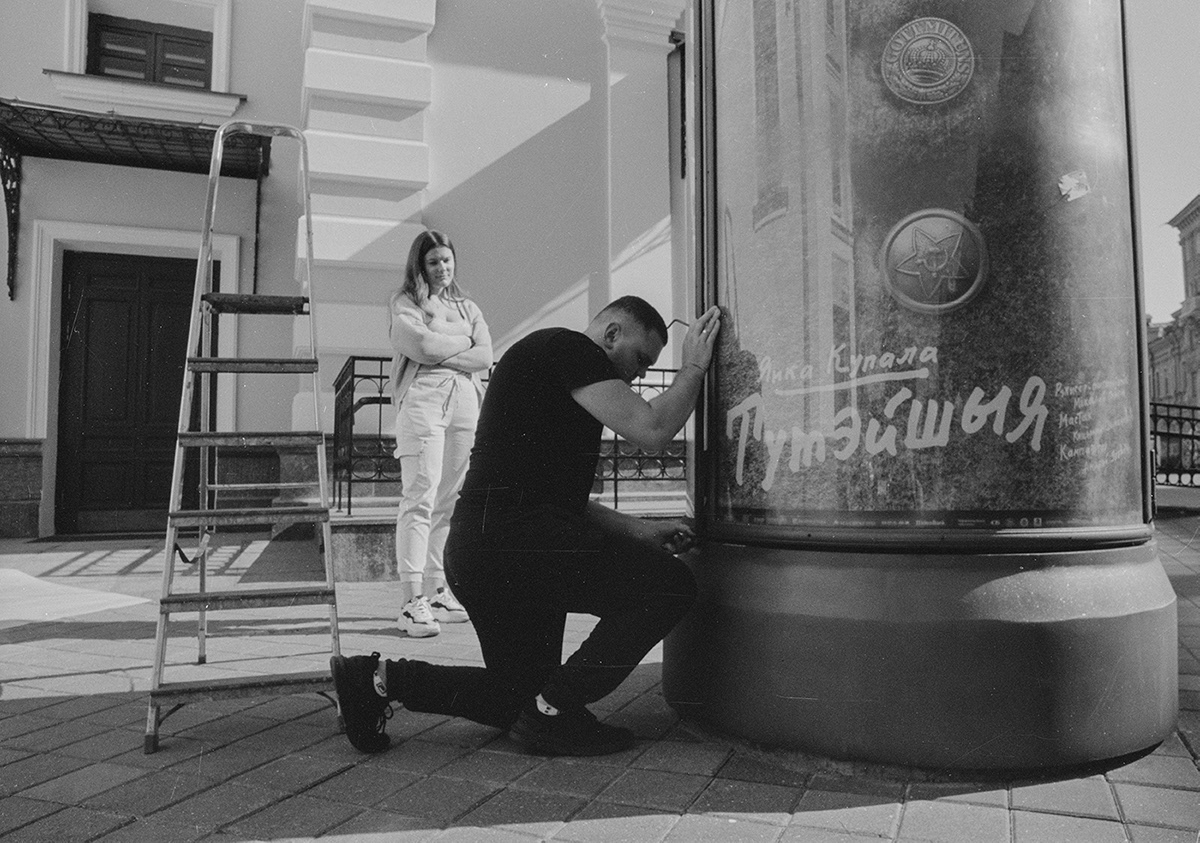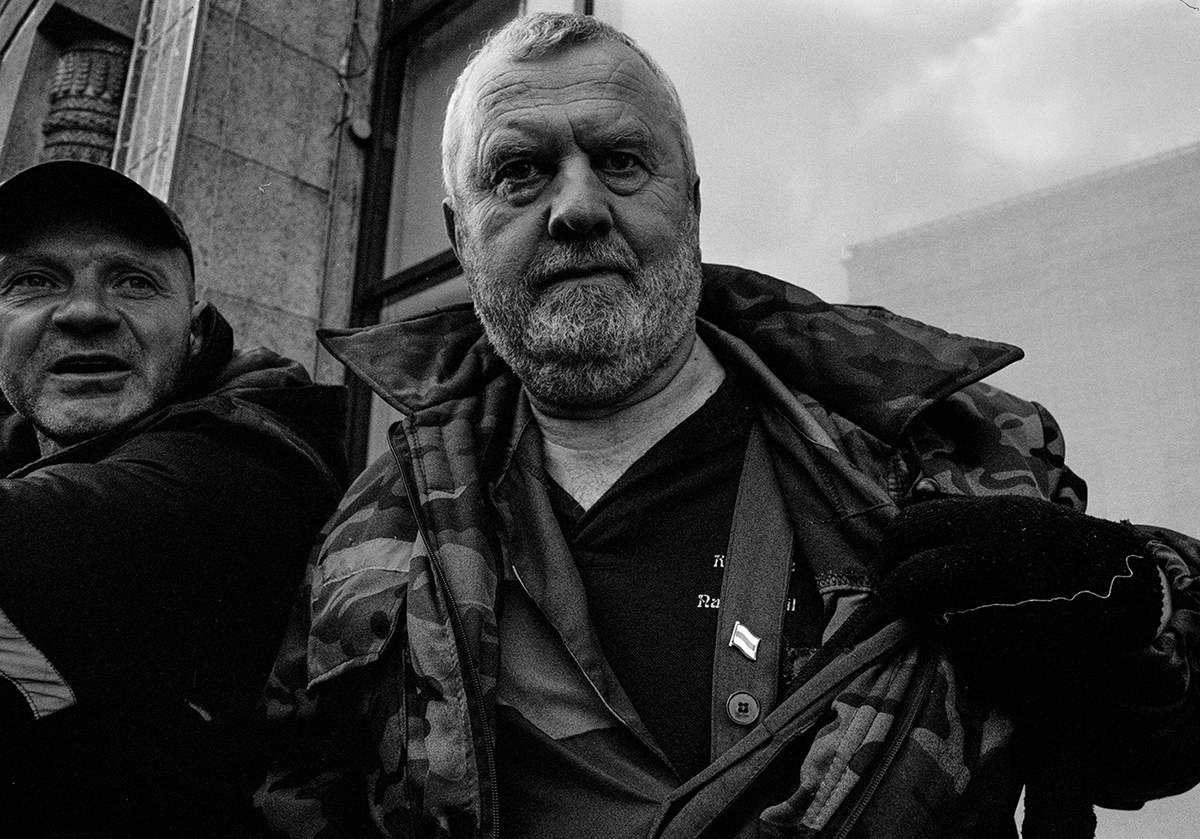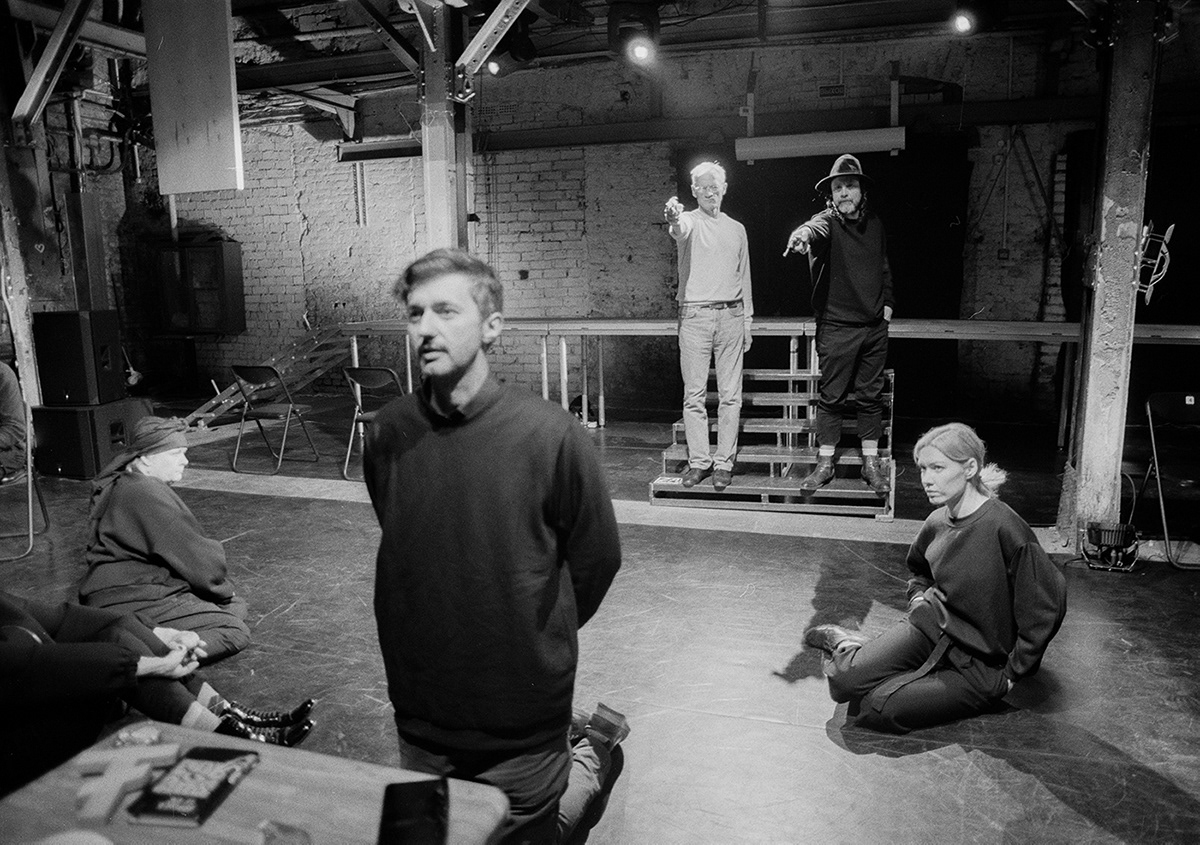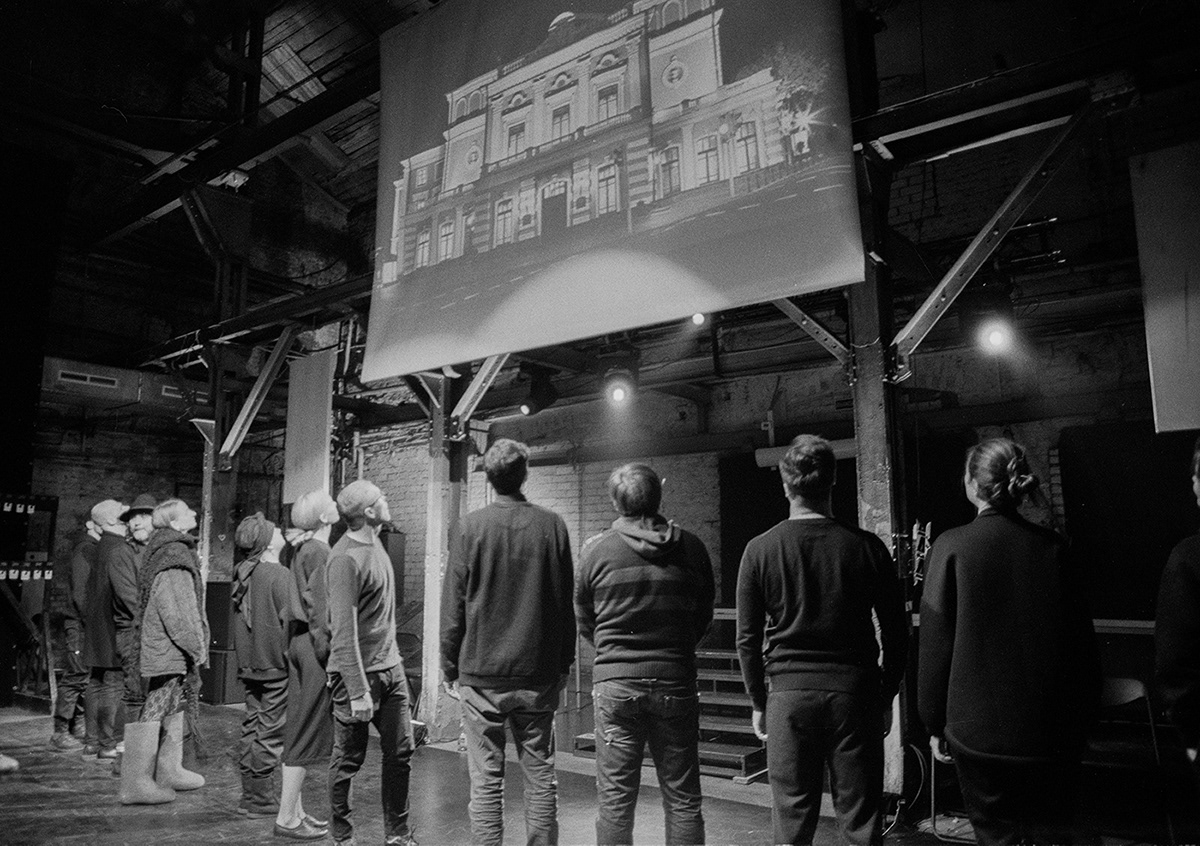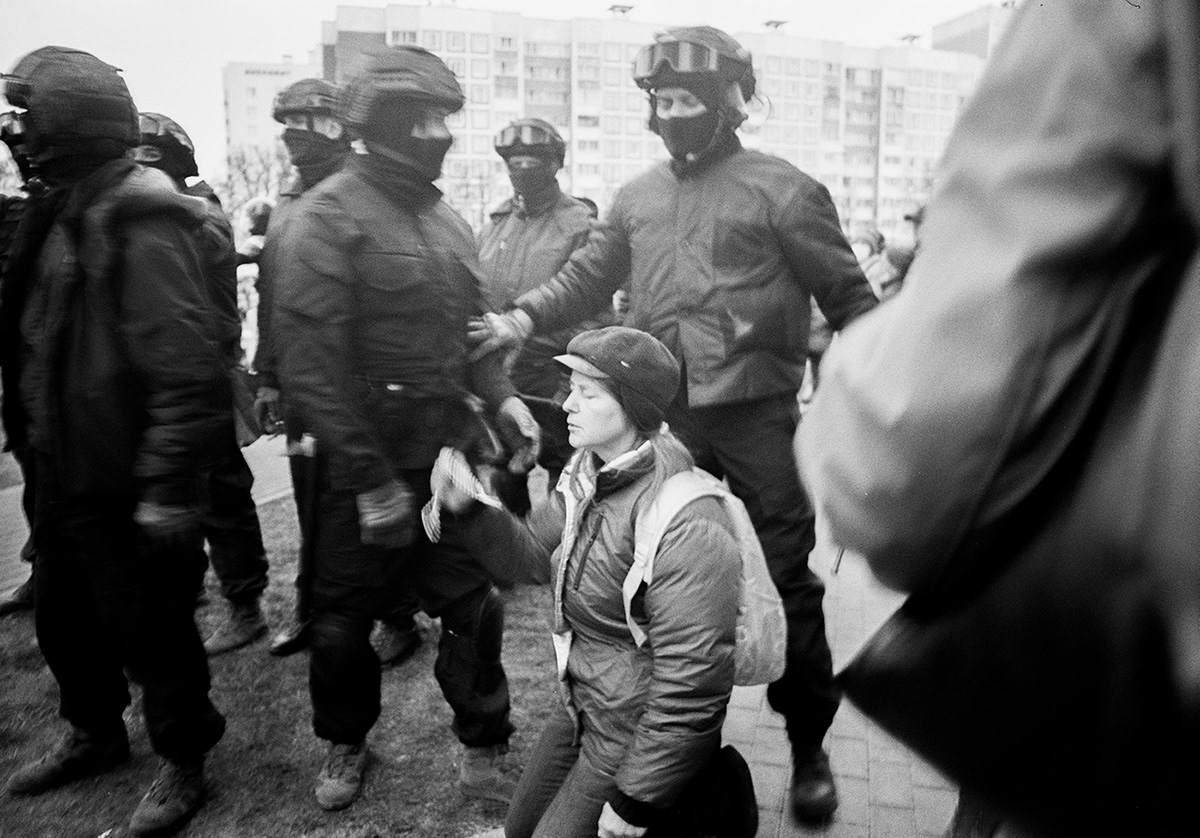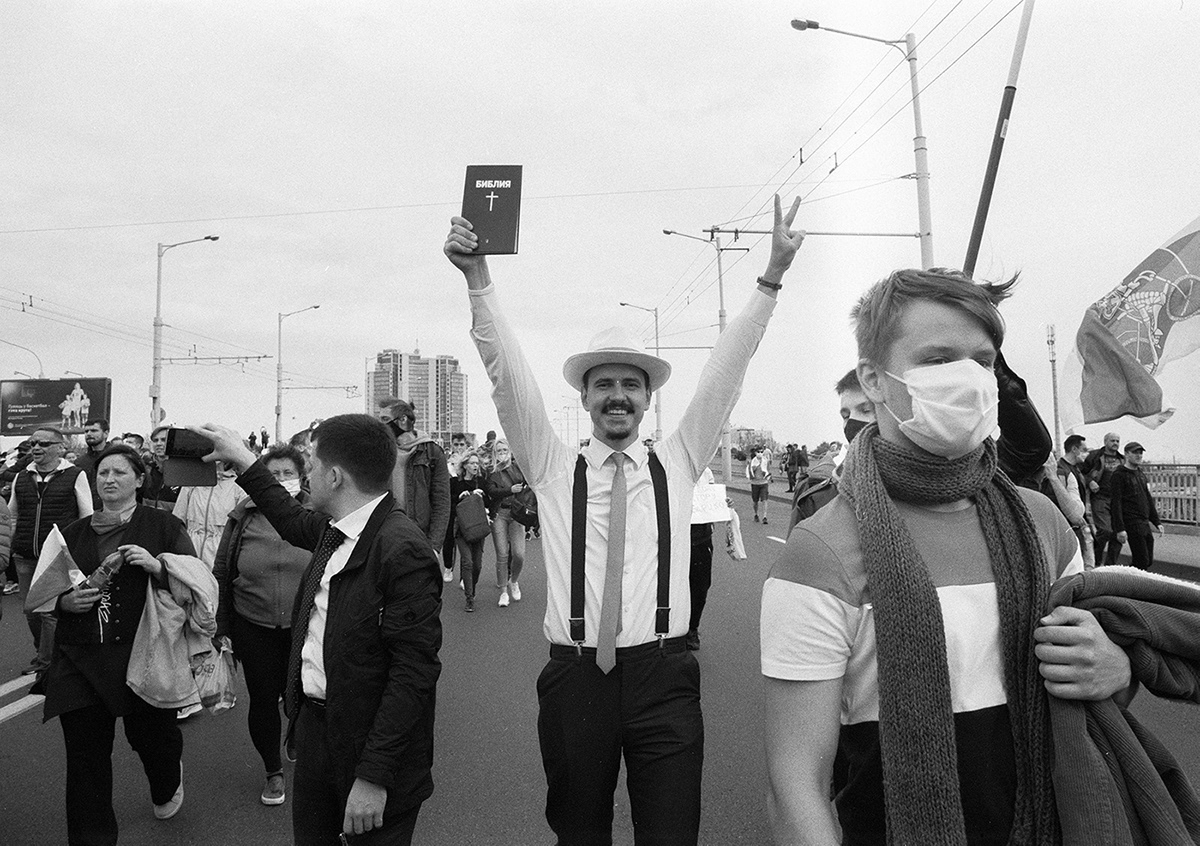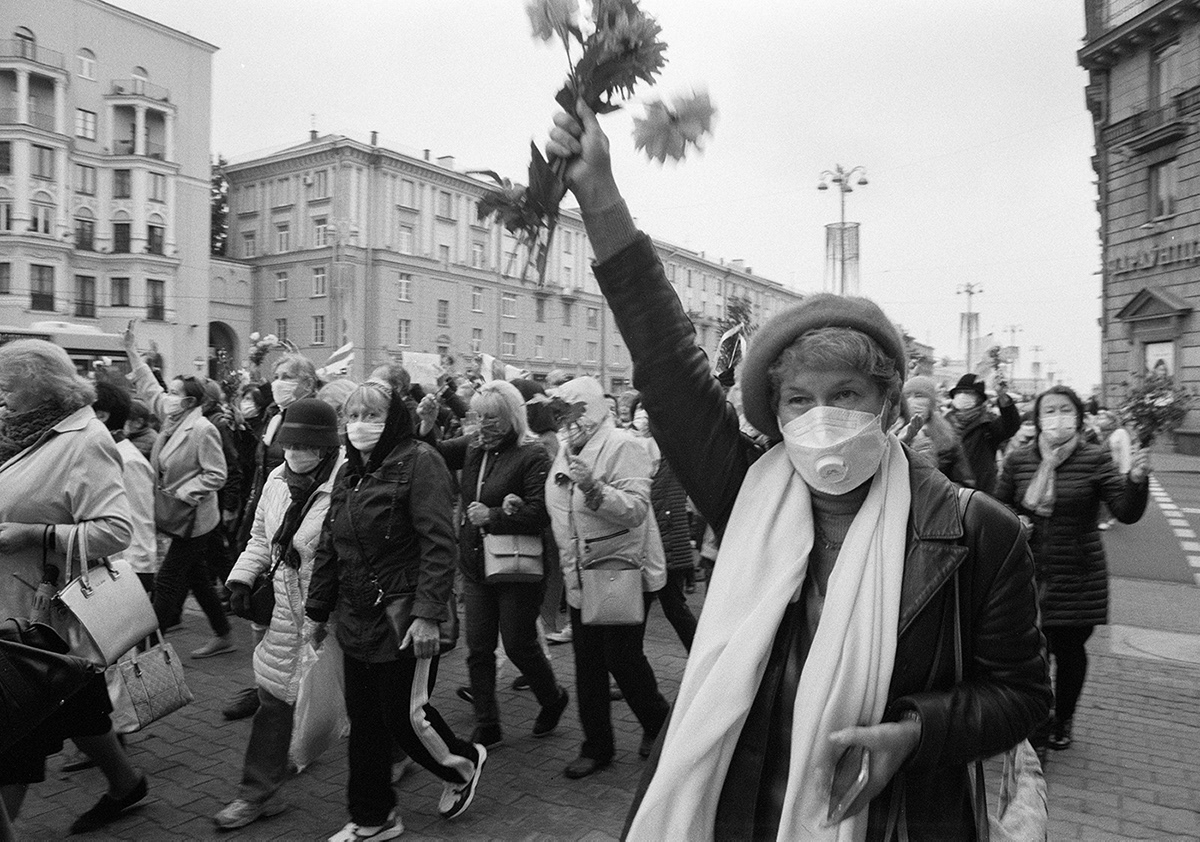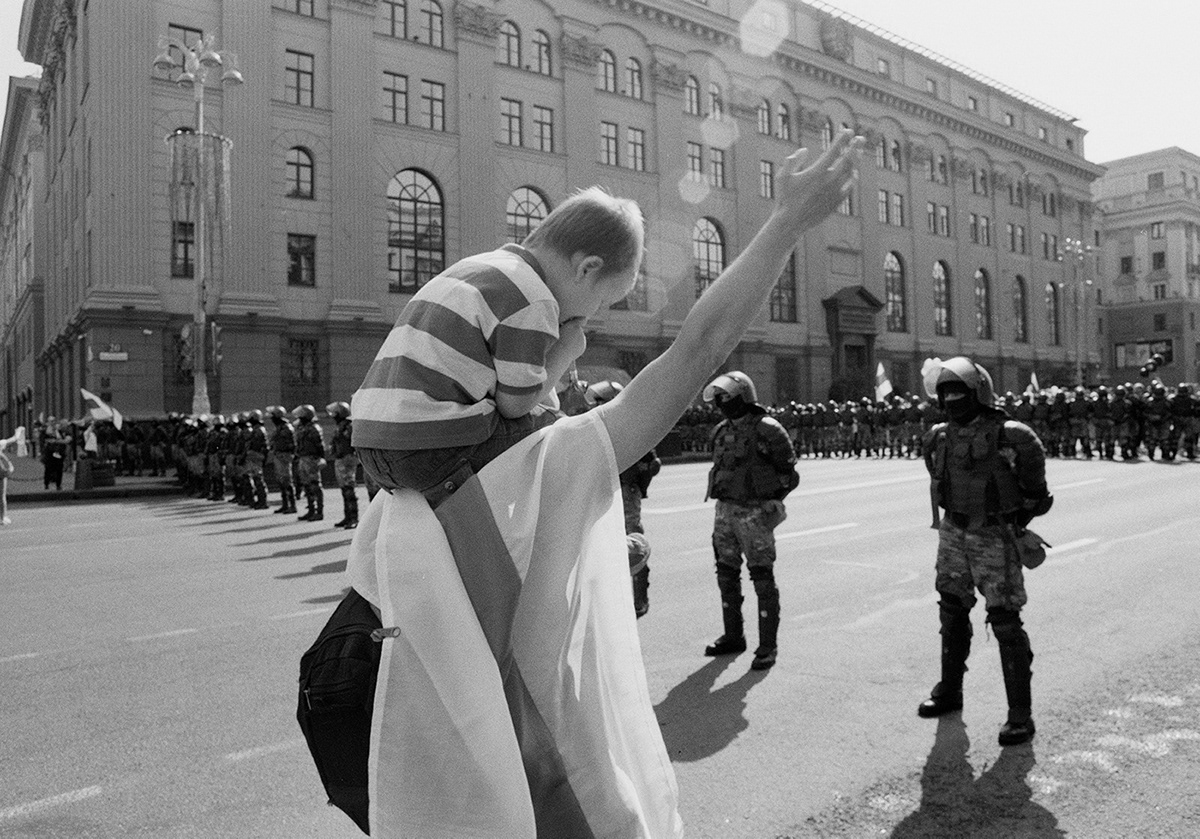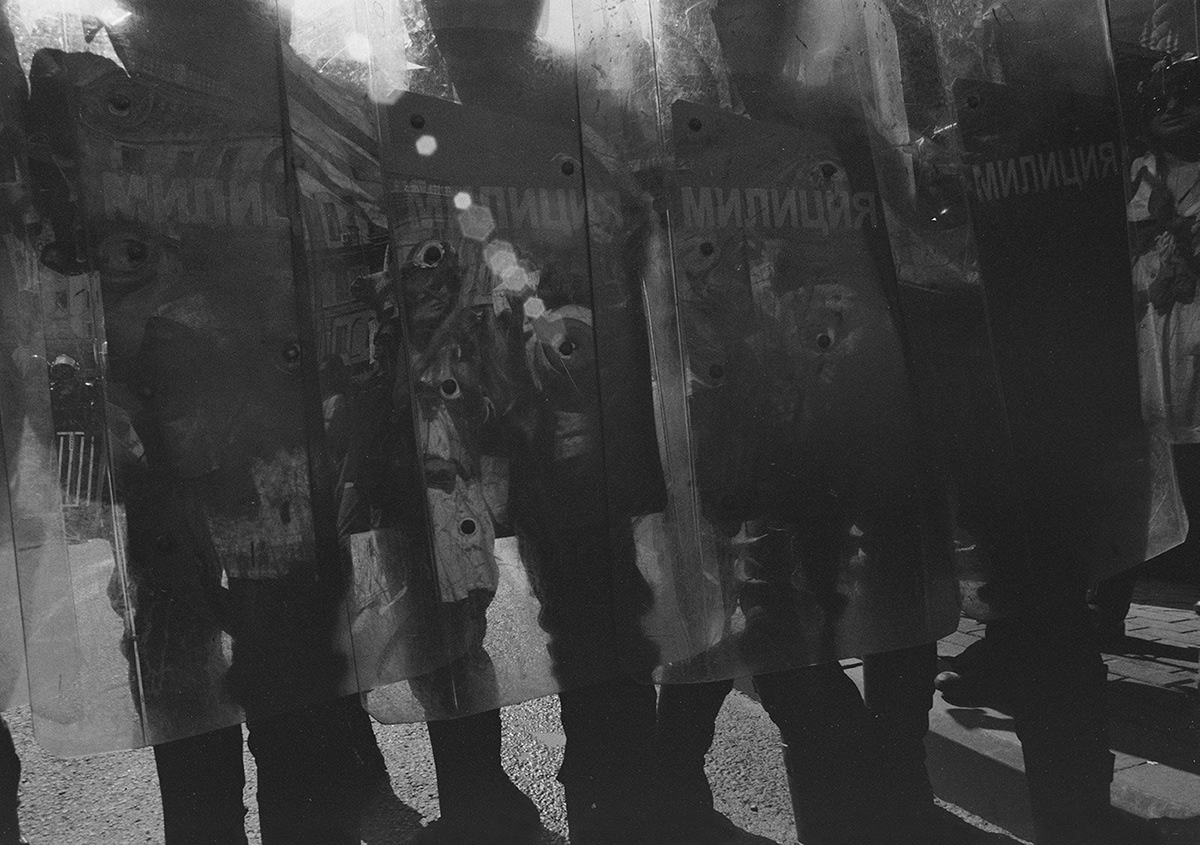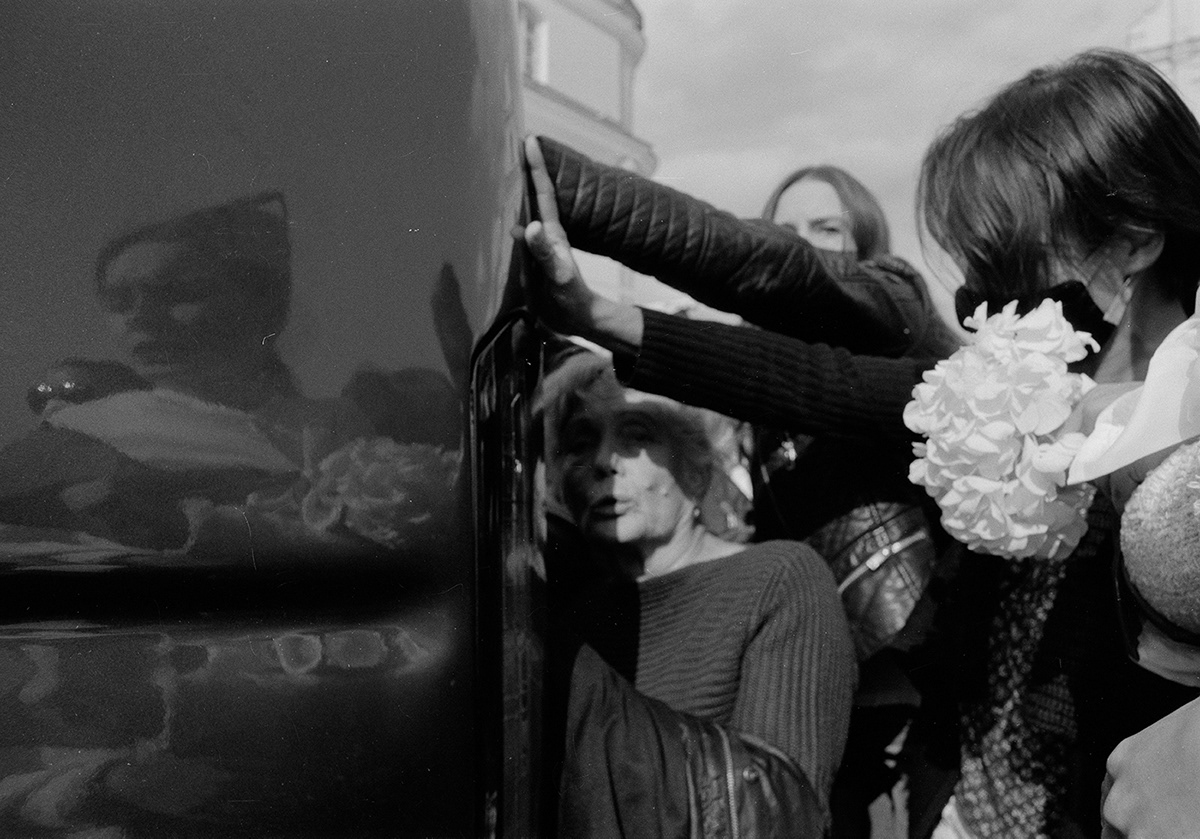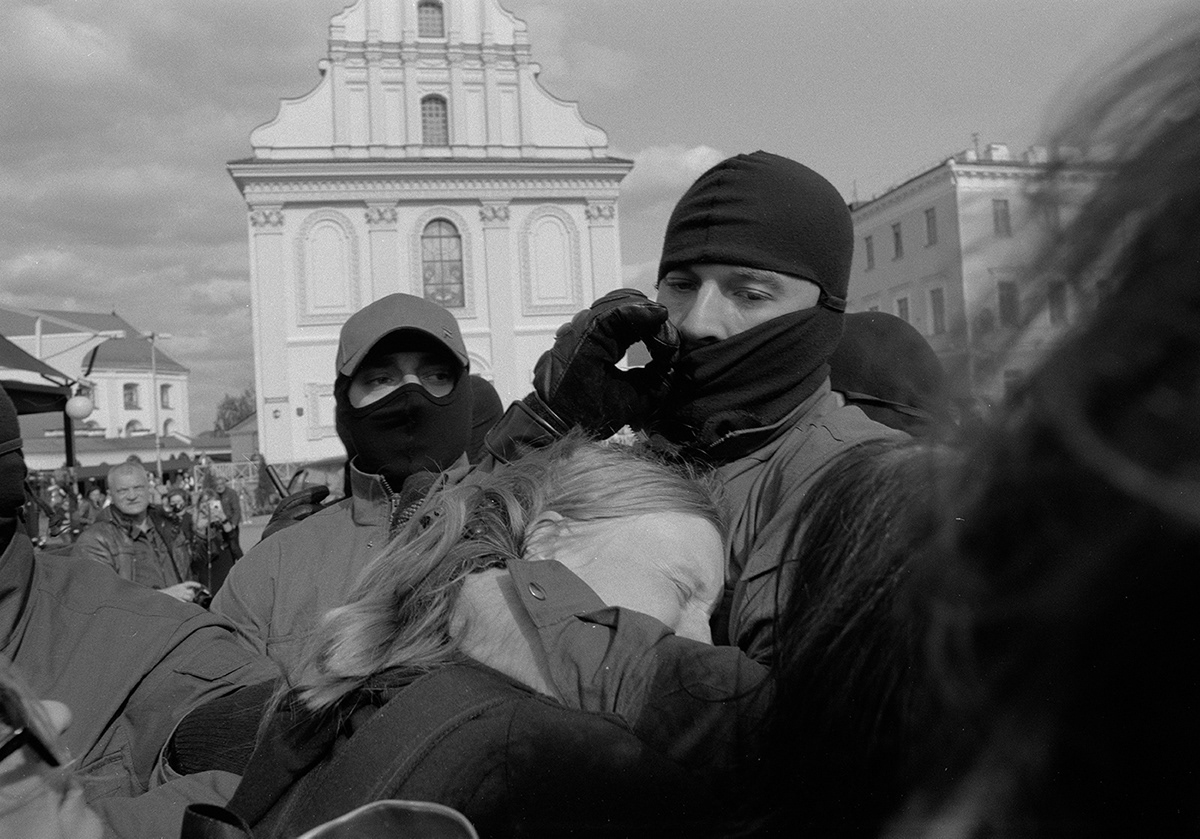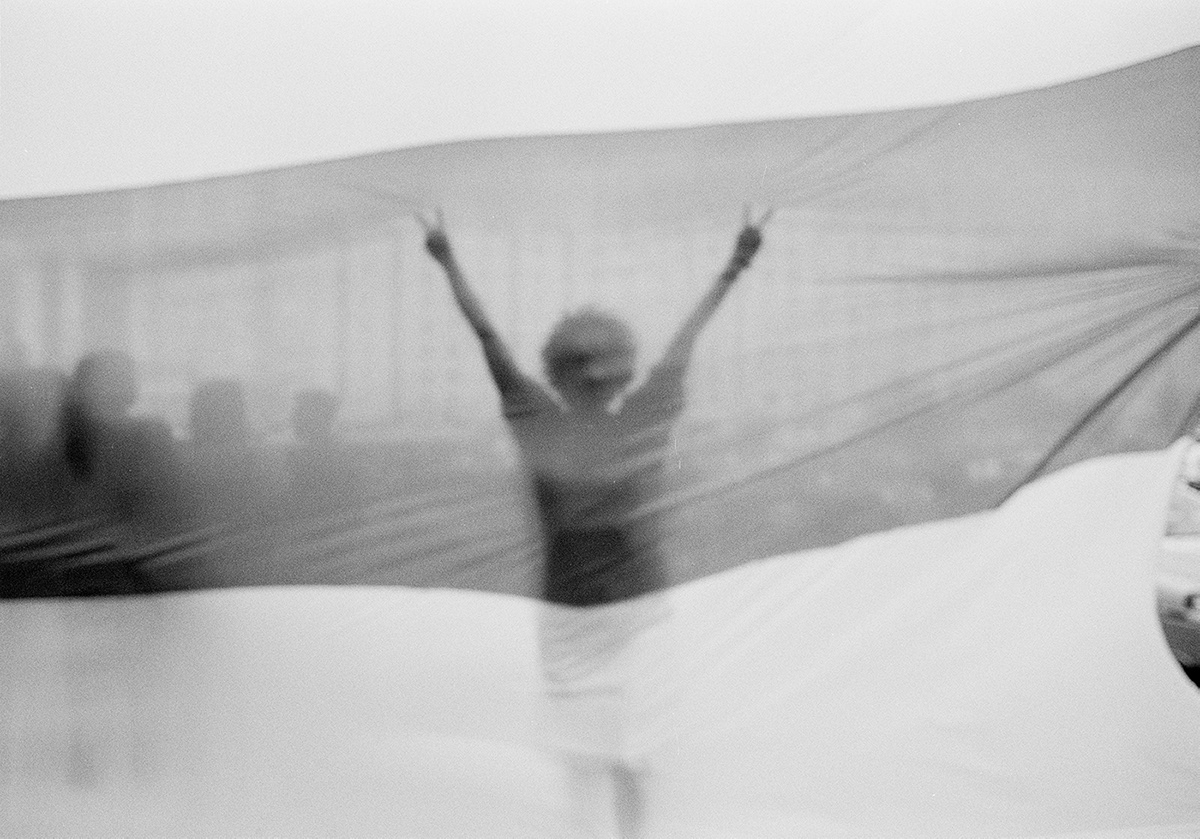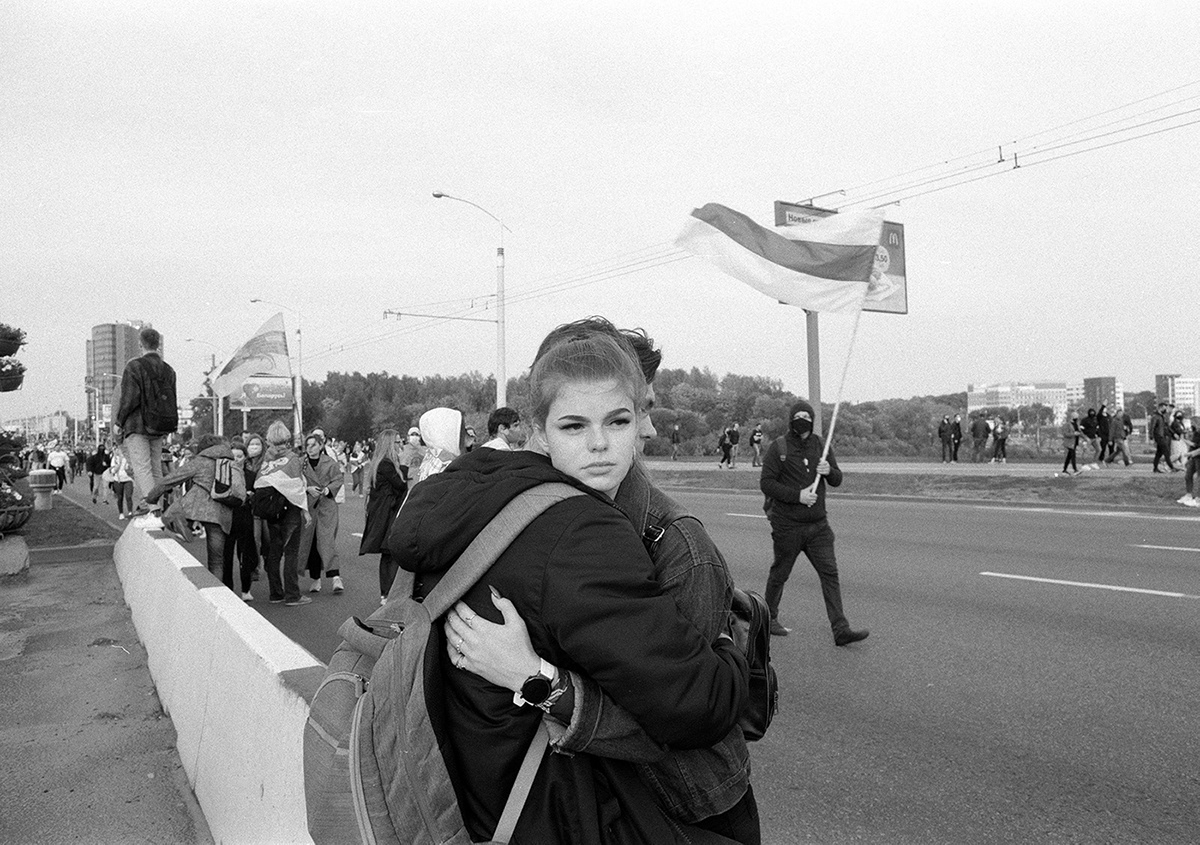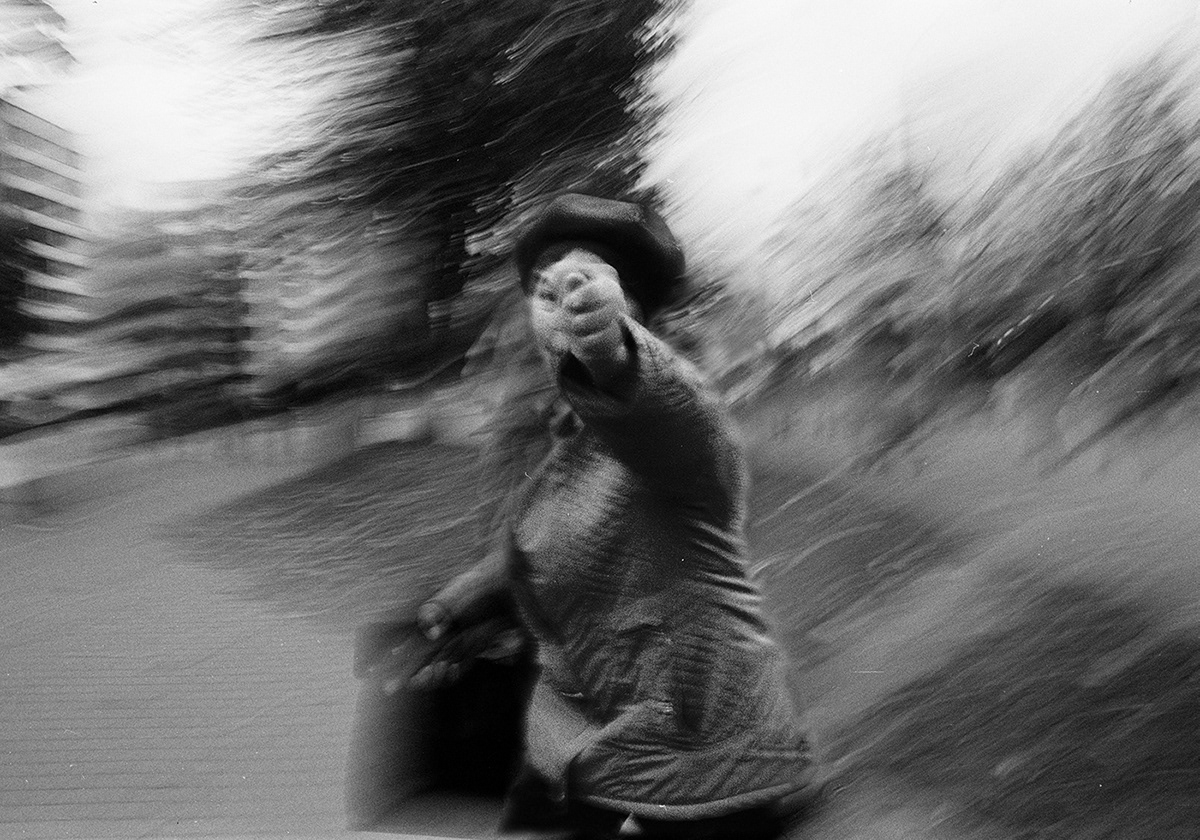"The REM sleep"
Zmicer Waynowski’s project “the Rem sleep” is a photographic document, a living testimony of the tragic and inspiring events taking place in Belarus “here and now”, research on the paradoxical phenomenon of peaceful non-violent protest of the people of Belarus. It is the Protest that becomes the main form of art, and it is the Street that becomes the country's main art stage. All of rethinking, reflecting and artistic expression will be made afterwards. Here and now, each of us is a participant, documentalist, and curator.
Like Josef Koudelka who made the whole world see the Prague Spring 1968, the author was “too close” to the event and managed to capture on film negatives all main plots of this obviously complicated and dramatic story revolving under the unprecedented pressure on independent and foreign journalism, on each person with a photocamera. Being part of protest, being with people, being in solidarity and unity is the author’s primary and main motive; a photographic document which is undoubtedly the author’s artistic statement is an unexpected and beautiful material which is, just like the Belaruisan peaceful protest, work is progress. The choice of the tool (film camera, black and white negative film) in the modern digital world is also to some extent a continuation of this paradoxical history of protest which has become the revolution of aesthetics above all.
We have found our own unique plot which has no analogues in history. The fight goes on.
In November 2020, Zmicer Waynowski was detained during the traditional weekly protest called Pensioners' March. He was convicted under the infamous administrative article 23.34, receiving 13 days of imprisonment, as a result.
This was the author's last shoot. After serving 13 days in prison, the author was subjected to further pressure and harassment and was forced to leave the country. He now lives in Lublin, Poland.
Alena Pratasevich, a curator
The 2020 presidential elections in Belarus were held with an incredible level of fraud, which led to massive street protests that lasted for over six months, and in one form or another, continue to the present.
The fearless and the insatiable thirst for changes of some and the almost hereditary fear of the new in others, created a collective street body, looking into which it is important for the photographer to discover the individual “body”. The poses, plasticity and "dialogues" of this body scare with their "academic", repeating in time, again and again, but also, attracting with a new rendition of the old.
For this reading, I picked up a camera from the 80s of the last century, inserted a black and white film, and came as close as I could get to the present.
I named my project “The REM sleep”.
Everything that’s happening in our society at the moment is like a paradoxical dream – like REM, the period during sleep characterized by increased brain activity.
One of the signs of this phase is the rapid movement of the eyeballs. When you look at them, you have a feeling that the sleeper sees something bright and colorful and is about to wake up, having fixed what he saw in his or her memory.
All this restless sleep, alternating with slow and fast phases, I attempted to document on film.
I do not know what society dreams about, which stages of sleep get repeated and which produce something new, but I know for a fact, that I want to be near in the moment when those eyes, full of either fear or fearlessness, would open.
Zmicer Waynowski, a photographer
Праект Змітра Вайноўскага «the REM sleep» - фатаграфічны дакумент, жывое сведчанне трагічных і натхняльных падзей, якія адбываюцца «тут і цяпер» у Беларусі, даследаванне парадаксальнага феномена мірнага негвалтоўнага пратэсту беларускага народа. Уласна Пратэст стаўся галоўнай формай мастацтва, а Вуліца - галоўнай мастацкай пляцоўкай краіны. Усе пераасэнсаванні, рэфлексіі, мастацкія выказванні будуць зробленыя пасля. Тут і цяпер кожны з нас - удзельнік, дакументаліст, куратар.
Аўтак здымкаў, як некалі Ёзэф Коўдэлка, дзякуючы якому ўвесь свет убачыў «Пражскую вясну 68», быў «занадта блізка» да падзей і ва ўмовах беспрэцэндэнтнага ціску з боку рэжыму на незалежную і замежную журналістыку, на кожнага чалавека з фотакамерай здолеў ухапіць і захаваць на фотаплёнцы ўсе галоўныя сюжэтныя лініі гэтай складанай і драматычнай гісторыі. Быць часткай пратэсту, быць разам з людзьмі, выказаць салідарнасць і адзінства - асноўны і галоўны матыў фатографа; фотадакумент, які зараз, несумненна, з’яўляецца мастацкім выказваннем аўтара, гэта адначасова нечаканы і прыгожы матэрыял, які, як і беларускі мірны пратэст, знаходзіцца ў стане work in process. Выбар інструментаў (класічная камера, чорна-белая плёнка) у сучасным лічбавым свеце ў пэўным сэнсе з’яўляецца працягам парадаксальнай гісторыі пратэсту, якая стала, перш за ўсё, эстэтычнай рэвалюцыяй.
У лістападзе 2020 года Зміцер Вайноўскі быў затрыманы на традыцыйнай штотыднёвай акцыі пратэсту пад назвай «Марш пенсіянераў». Гэта была яго апошняя праца на вуліцах сталіцы. Яго асудзілі на 13 сутак арышту на падставе сумнавядомага адміністрацыйнага артыкула 23.34. Пасля адбыцця пакарання аўтар падвяргаўся далейшаму ціску і пераследу і быў вымушаны пакінуць краіну.
Алена Пратасевіч, куратар
Прэзідэнцкія выбары 2020 года ў Беларусі мелі неверагодны узровень фальсіфікацый, што выклікала масавыя вулічныя пратэсты, якія працягваліся больш за паўгода, а ў тым ці іншым выглядзе адбываюцца і цяпер.
Неспатольная прага пераменаў у адных і спадчынны страх перад новым у іншых стваралі разам «калектыўнае цела» вуліцы, уважліва прыглядаючыся да якога, фатографу важна было ўгледзець «цела індывідуальнае». Позы, жэсты і «дыялогі» гэтага цела палохаюць сваёй «акадэмічнасцю» і паўтаральнасцю, але таксама спакушаюць магчымасцю па-новаму прачытаць старое.
Для гэтага прачытання я ўзяў у рукі фотаапарат 80-х гадоў мінулага стагоддзя, заклаў у яго чорна-белую плёнку і падышоў настолькі блізка, наколькі змог падысці, да «сапраўднага».
Свой праект я назваў «The REM sleep».
Усё, што адбываецца цяпер у нашым грамадстве, уяўляецца мне як фаза парадаксальнага сну соцыуму – фаза REM, якая характарызуецца падвышанай актыўнасцю галаўнога мозгу. Адным з сімптомаў гэтай фазы з’яўляецца хуткі рух вачэй пад павекамі, што стварае ўражанне, быццам чалавек, які спіць, бачыць нешта яскравае і маляўнічае і вось-вось прачнецца, зафіксаваўшы ў памяці ўбачанае.
Увесь гэты неспакойны сон, у якім чаргуюцца павольныя і хуткія фазы, я і спрабаваў зафіксаваць на плёнку.
Я не ведаю, што сніцца грамадству, і ў якой з дзвюх фаз снабачанні паўтараюцца, а ў якой намалявана нешта новае. Але я напэўна ведаю, што хацеў бы апынуцца побач у той момант, калі ягоныя вочы расплюшчацца.
Зміцер Вайноўскі, фатограф
